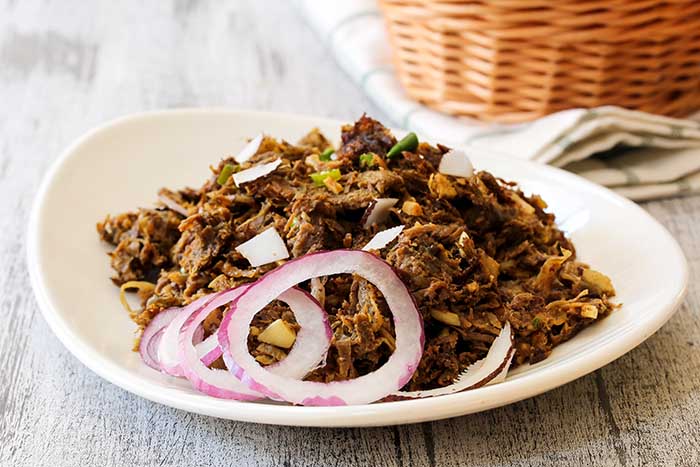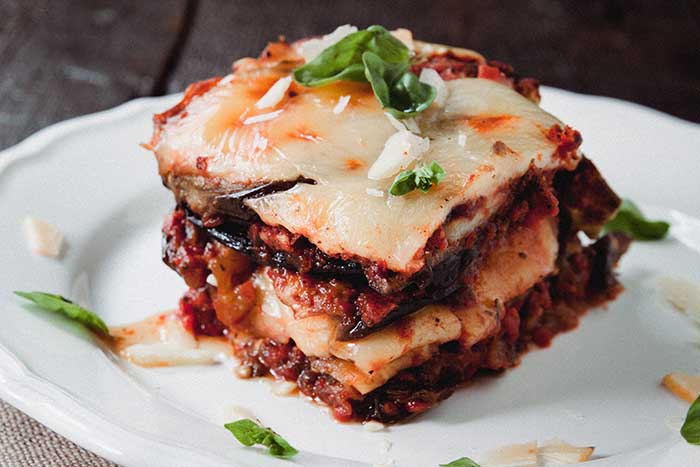Easy sushi side dish and serving ideas, from wasabi to miso soup, and gyoza to tonkatsu. Discover what to serve with sushi today.
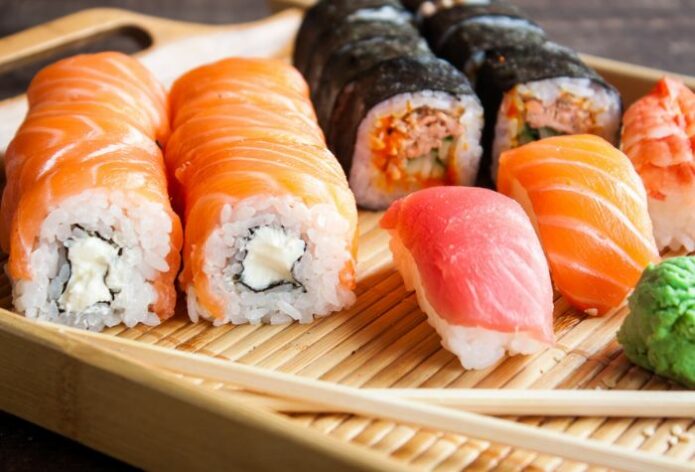
Arguably the most popular dish in Japanese cuisine, sushi is nutritious, delicious, and completely customizable to your taste preferences. Originally made with a mixture of slightly sweet and vinegared rice, seaweed, vegetables, and (often raw) seafood, sushi can now be eaten with your choice of protein and rolled just how you like.
And while the natural taste of sushi is great on its own, having some side dishes and sauces to accompany this dish can take the flavor one step further.
From sauces that enhance the natural flavor of the fish to refreshing salads that cleanse the palate in between bites, these dips and sides for sushi will bring out its delightful umami taste.
Miso Soup
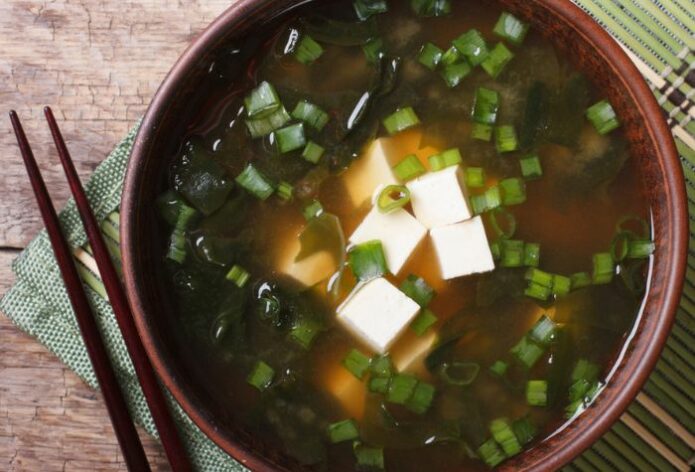
Apart from being full of probiotics (hello, healthy gut), miso soup is warming, hearty, and the perfect soup to accompany sushi. Made from a mixture of soybeans, rice koji, and sea salt, the miso paste is fermented and ready to serve with a dash of boiling water and some added tofu for taste.
While you’ll be able to find ready-to-drink miso soup sachets in the majority of Asian supermarkets, you can also try making your own at home. Relatively inexpensive and quick to make, a pot of miso soup can feed you and the whole family for days.
Try This Recipe: This homemade miso soup combines quick and easy dashi stock with tofu, seaweed, and a sprinkle of green onions.
Seaweed Salad
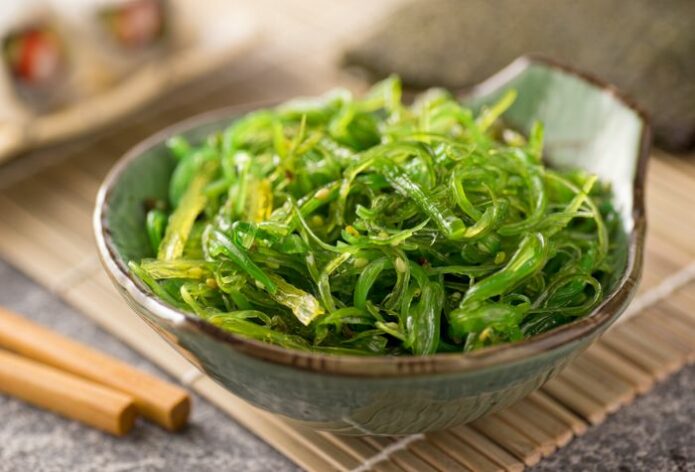
For all the seaweed lovers out there, you won’t want to miss out on seaweed salad. Light, fresh, and a little bit crunchy, the preparation of seaweed in a salad form manages to cleanse the palate in between bites of sushi. Also, the vibrant green color and noodle-like seaweed strands make for a fun eating experience.
Soy sauce, sesame oil, mirin, and red pepper flakes are added to seaweed which adds a burst of flavor with each mouthful. Refrigerate it for at least half an hour and sprinkle some sesame seeds on top, and you’ve got a summer salad worth savoring.
Try This Recipe: This Japanese seaweed salad is restaurant-style, packed with the familiar sweet and salty flavor—plus a hint of spice!
Ramen
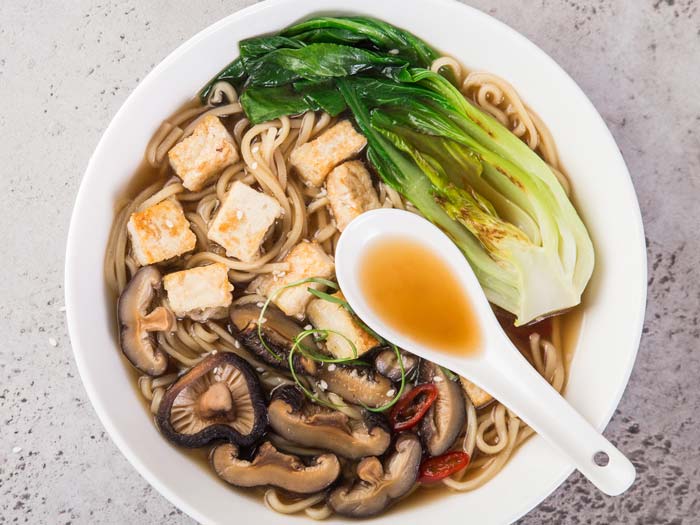
Japan’s classic noodle broth dish, ramen is rich with a comforting umami flavor and is easy to make from scratch at home. While traditionally made with shredded pork, this classic noodle dish can be made with any number of meats or vegetables instead.
Try This Recipe: Loaded with crispy firm tofu and shiitake mushrooms, this tofu ramen is cooked in a broth with miso paste and soy sauce to give it its comforting flavor.
Pork Gyoza
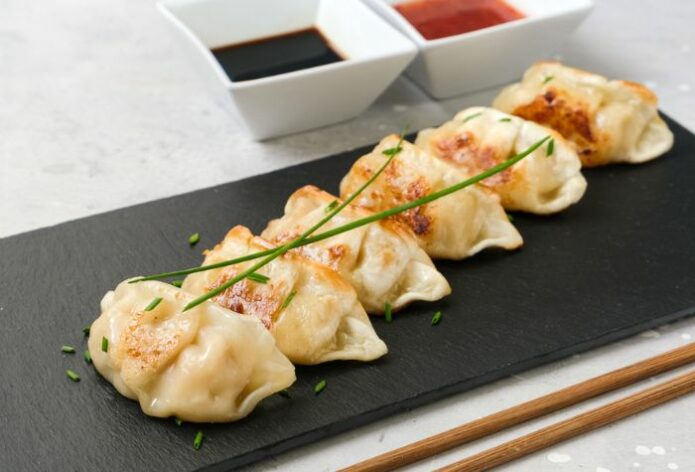
There’s something so moreish about pork gyoza. These bite-sized dumplings are incredibly savory, warming, and lightly spiced, with the inclusion of garlic, ginger, and various seasonings. However, the magic of gyoza lies in the preparation and cooking process. The mixture of steaming and pan-searing results in a crispy bottom and delicate wrapping, which gives way to a deliciously meaty center.
Due to the versatility of gyoza, you can play around with the fillings including swapping pork for chicken, beef, or shrimp. The addition of green cabbage and mushrooms bring in texture and chew to each bite. Gyoza is a common side dish eaten with sushi, and it’s not hard to see why.
Try This Recipe: These Japanese gyoza are crispy on the bottom yet intensely juicy in the middle, making them perfect for the whole family.
Ponzu Sauce
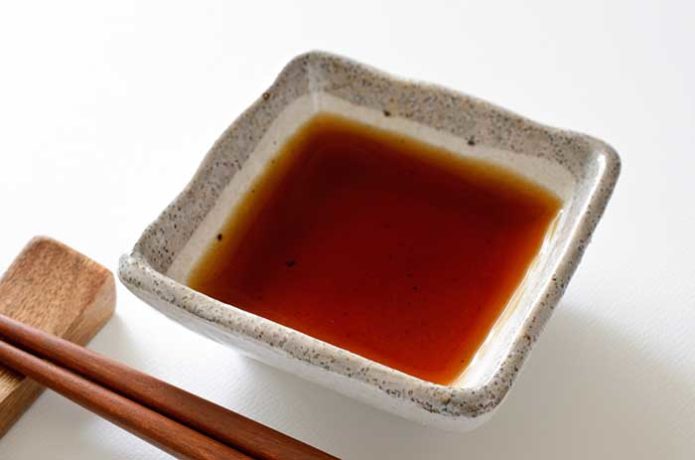
A classic Japanese condiment eaten with a variety of dishes, ponzu sauce is known for its slightly tart and slightly tangy flavor. The flavor profile of this sauce really shines when eaten in combination with raw fish or raw seafood, making it a great sauce alternative to sushi if you’re looking for another option to soy sauce and wasabi.
Often prepared with a mixture of citrus juices, rice wine vinegar, mirin, dashi stock, and more, don’t be surprised if you start lathering this sauce on all of your favorite dishes anytime soon.
Try This Recipe: This homemade ponzu sauce is quick to whip up and is a darker version of traditional ponzu, thanks to the inclusion of soy sauce.
Tempura Vegetables
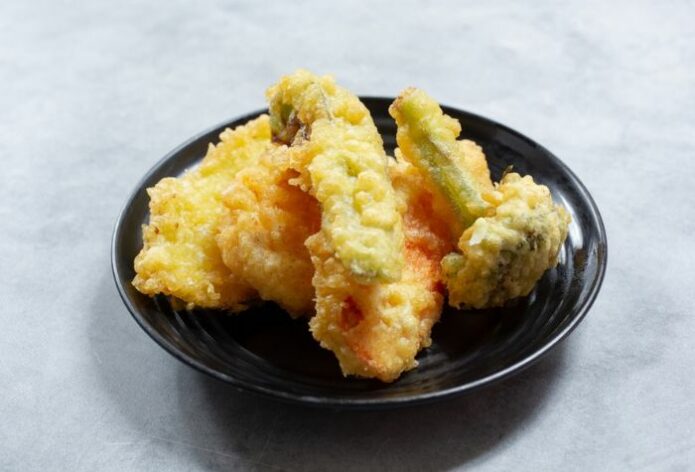
Break up the monotony of eating plain vegetables on the side with tempura vegetables. Unlike other deep-fried foods, tempura-style frying means the vegetables aren’t dripping with oil the minute they’re out of the fryer. Instead, the light and airy batter coating ensures each bite is as crispy and satisfying as ever.
The best part of making tempura vegetables is being versatile in the type of vegetables you fry up. You can try all types of veggies, from pumpkin, zucchini, mushroom, and carrot—to the more unique types like lotus root.
Try This Recipe: The inclusion of egg, ice water, and all-purpose flour in this vegetable tempura makes a light and guilt-free batter.
Miso Glazed Eggplant
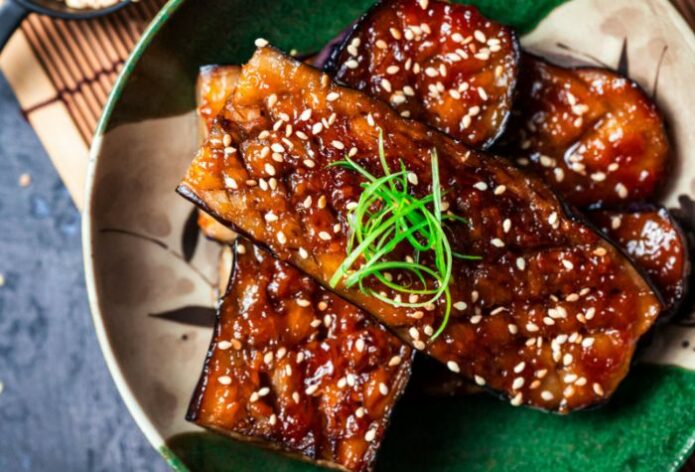
Sweet, sticky, and salty, miso glazed eggplant is a great side dish to sushi due to its miso flavor and light yet savory taste. Best of all, this dish is completely gluten-free and helps up the vegetable intake (especially if you’ve got some picky eaters in the house).
Brown miso paste, sesame oil, mirin, and rice wine vinegar combine to make a decadent sauce that lightly coats crisscrossed eggplants. Piercing the eggplant allows the flavors to sink even deeper and coat each bite.
Try This Recipe: The addition of maple syrup in this miso-glazed eggplant adds a big dose of sweetness, resulting in beautiful caramelization during the cooking process.
Japanese Fried Chicken (Karaage)
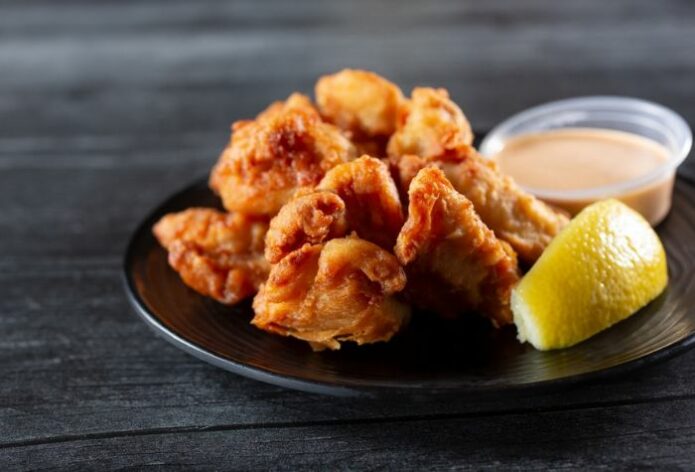
Is there anything quite as good as fried chicken? Every cuisine and culture seems to have its own spin on this well-loved classic, and Japanese cuisine is no different. Known as karaage, Japanese fried chicken is a great crunchy side dish option for having with sushi.
Tender morsels of chicken thighs are marinated with sake, ginger, and soy sauce to penetrate the flavors deep into the meat. Then, they’re lightly coated with a special ratio of flour and potato starch before being fried in hot oil, for a delicious crunch.
Try This Recipe: This Japanese fried chicken has a one-to-one ratio of flour and potato starch to create exceptionally juicy pieces of meat.
Spicy Cucumber Salad
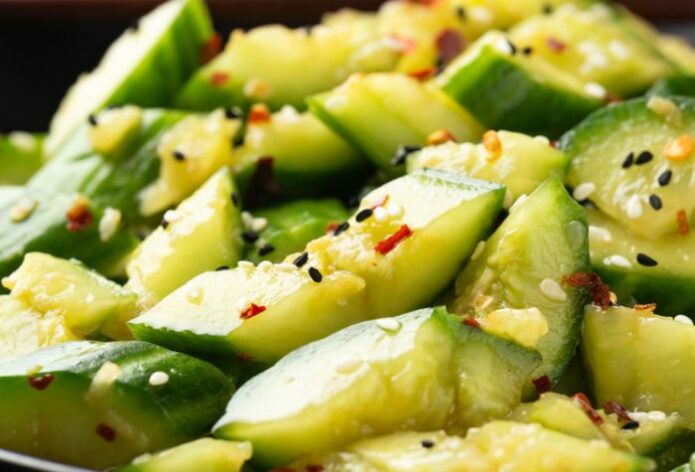
Often eaten as a side dish in many Asian cuisines, cucumber salad can elevate cucumbers and bring in new flavors you would never expect to be eaten with this humble vegetable. Spicy, sour, and sweet, cucumber salad is exceptionally easy to make and actually tastes best when you leave the flavors to develop overnight in the fridge.
Soy sauce, ginger, chili oil, sugar, and rice vinegar are mixed to coat chopped up cucumbers for a satisfying crunch. It’s best eaten straight from the fridge, making it a perfect option for al fresco dining or during the warmer months. And if you’re not the best at handling spice, you can also play around with the ratio of ingredients—which can be tailored exactly to your liking.
Try This Recipe: These spicy Asian cucumbers are spiraled for presentation, but it also makes the spicy and savory sauce cling on to every part of the cucumber.
Japanese Pork Cutlet (Tonkatsu)
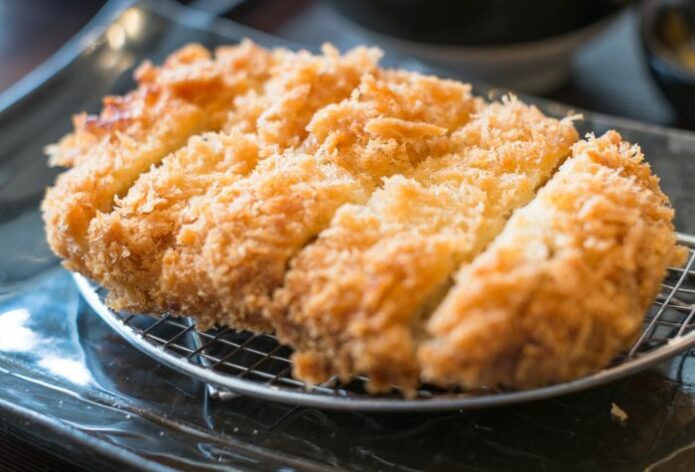
Tonkatsu, also known as Japanese pork cutlet, is a traditional Japanese dish that is well-loved by restaurants and home chefs all around the world. Coated in flour, egg, and panko breadcrumbs, tonkatsu can be eaten on its own (for low-carb diets), on a bed of rice and sauce (traditional way), or in this case, eaten as a crunchy accompaniment for sushi.
Due to the preparation and frying method, Japanese pork cutlets are completely dry and crispy on the outside, yet retain that moisture in the middle. Due to this, they can be eaten as is, although savory tonkatsu sauce is recommended to add on—and trust us, you’ll want to add it on after you’ve had a taste!
Try This Recipe: This tonkatsu fried pork is simple and easy to make and comes with a side of crispy, ice-cold green cabbage for contrast.
Agedashi Tofu

Melt-in-your-mouth tofu coated in a light umami stock is the basis of agedashi tofu, a type of Japanese deep-fried tofu that has been eaten as an appetizer for generations. Unlike regular tofu you might have tried in stir-fries or other Asian-style dishes, agedashi tofu uses silken tofu for an unparalleled smooth taste. When this tofu is lightly fried with a coating of potato starch, this is where the flavor of the dish really shines.
Dashi stock, mirin, soy sauce, and sugar, and salt, combine to create a thin yet flavorsome stock that gently clings to the tofu and makes for a gentle eating experience. This style of tofu pairs well with sushi as it is delicate on the palate and suitable for younger children.
Try This Recipe: This agedashi tofu is velvety soft and quick to make, with the addition of delicious toppings like green onion, chives, and ginger.

